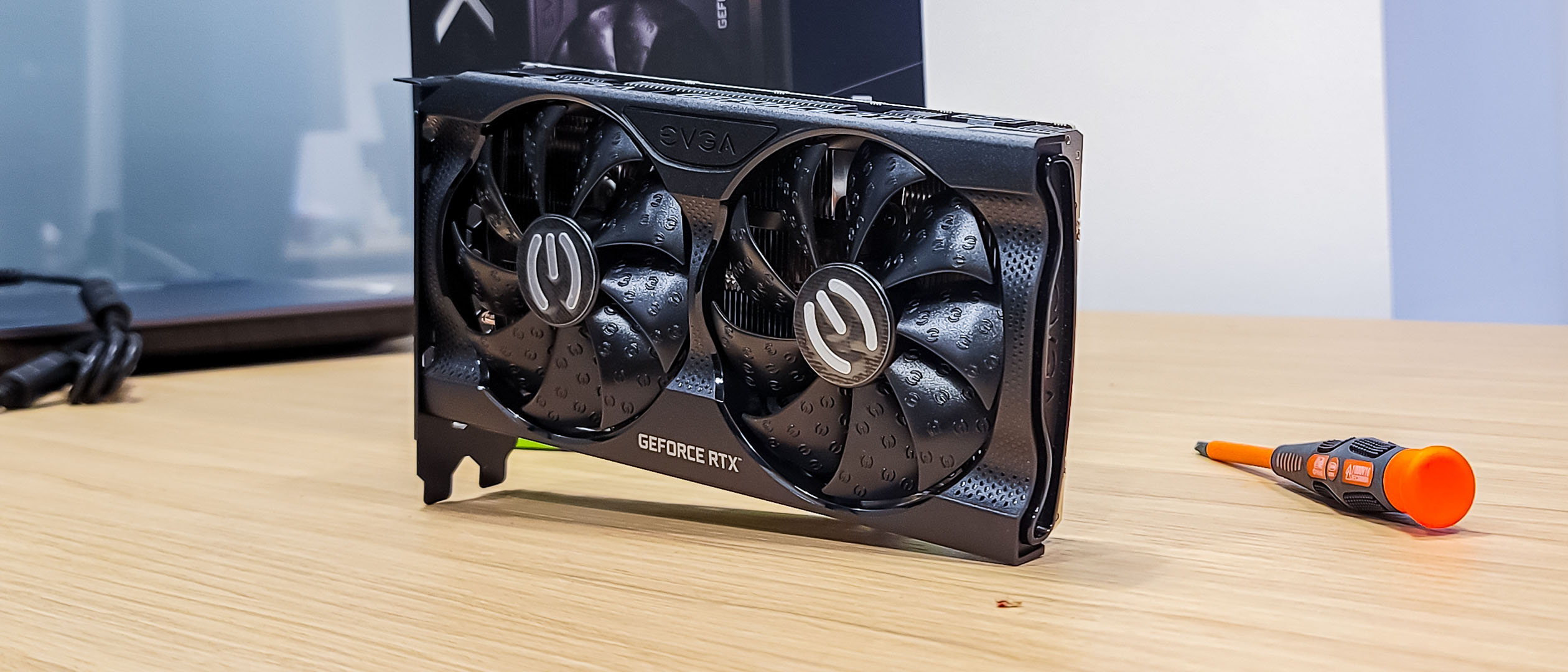TechRadar Verdict
The Nvidia GeForce RTX 3050 would make an excellent replacement for the GTX 1650. It provides incredible 1080p gaming performance, even with ray tracing – something the GTX 1650 couldn’t even do. However, its high price pits it against the RTX 2060, a fight the RTX 3050 just cannot win.
Pros
- +
Great 1080p gaming performance
- +
Ray tracing and DLSS
- +
Low temperatures
Cons
- -
Expensive for a 'budget' card
- -
Higher power
- -
Loses to RTX 2060
Why you can trust TechRadar
Two-minute review
The Nvidia GeForce RTX 3050 arrives at the perfect time – maybe even a little late – as the best graphics cards keep getting more and more expensive. And because GPUs keep selling out even the few that are reasonably priced haven’t exactly been worth the price tag – just look at the AMD Radeon RX 6500 XT.
However, with the RTX 3050, you’re not getting much lower performance than the next up Nvidia’s lineup, the RTX 3060. The RTX 3050 has no problem hitting 60 fps in any 1080p game you throw at it, though it might start to struggle in the most demanding games of the generation – think Cyberpunk 2077.
While that all sounds good, it’s hard to ignore how much prices have changed generation-on-generation. While a price tag of $249 (about £185, AU$350) might not seem high when you’re used to seeing graphics cards at $1,000 or more these days, it’s still significantly more expensive than xx50 cards of the past. For instance, the GTX 1050 Ti launched at $139 (£139, about AU$200), and the GTX 1650 launched at just $149 (£149, about AU$200).
So, likely due to an ongoing silicon shortage that’s seeing computing prices rise dramatically across the industry, the Nvidia GeForce RTX 3050 is nearly double the price of its last-generation sibling.
That drastic price increase does come with a huge increase in performance. However, people that were hoping to see a graphics card at actual budget prices will have to keep waiting – or turn to the used market. We just hope the RTX 4000 series has something more budget-friendly, assuming the shortage lets up any time soon.
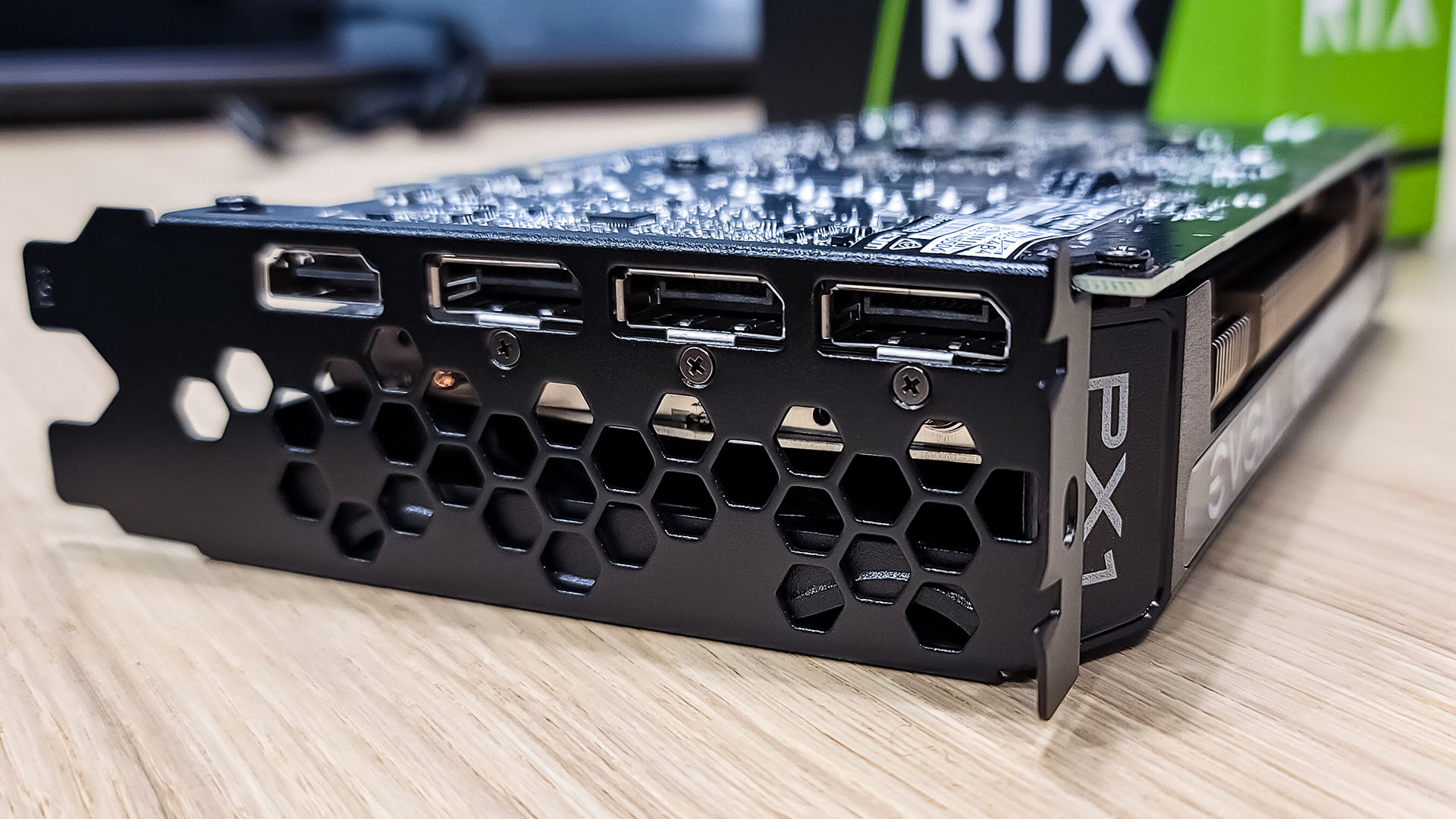
Price and availability
The Nvidia GeForce RTX 3050 is available now, starting at $249 (about £185, AU$350), with prices going up from there for more advanced third-party boards. We’re not sure what the aftermarket situation will look like once the boards become available, but if it’s anything like the RTX 3060, there may not be many graphics cards available at that starting price – instead prices might start to climb.
For instance, the EVGA GeForce RTX 3050 XC Black we’re reviewing here costs $249 (about £185, AU$350) and it’s a pretty basic version of the graphics card. If you want something with fancy RGB lighting and overclocking-friendly cooling setups, you’re going to have to spend quite a bit more.
Nvidia isn’t making a Founders Edition of the GeForce RTX 3050 – just like it didn’t with the RTX 3060 – which is the major reason that graphics cards at the low end of the pricing scale for this GPU will be incredibly rare. Hopefully, as the RTX 3050 isn’t going to be very good for crypto mining, it won’t see massive price increases after release. Only time will tell with that one.
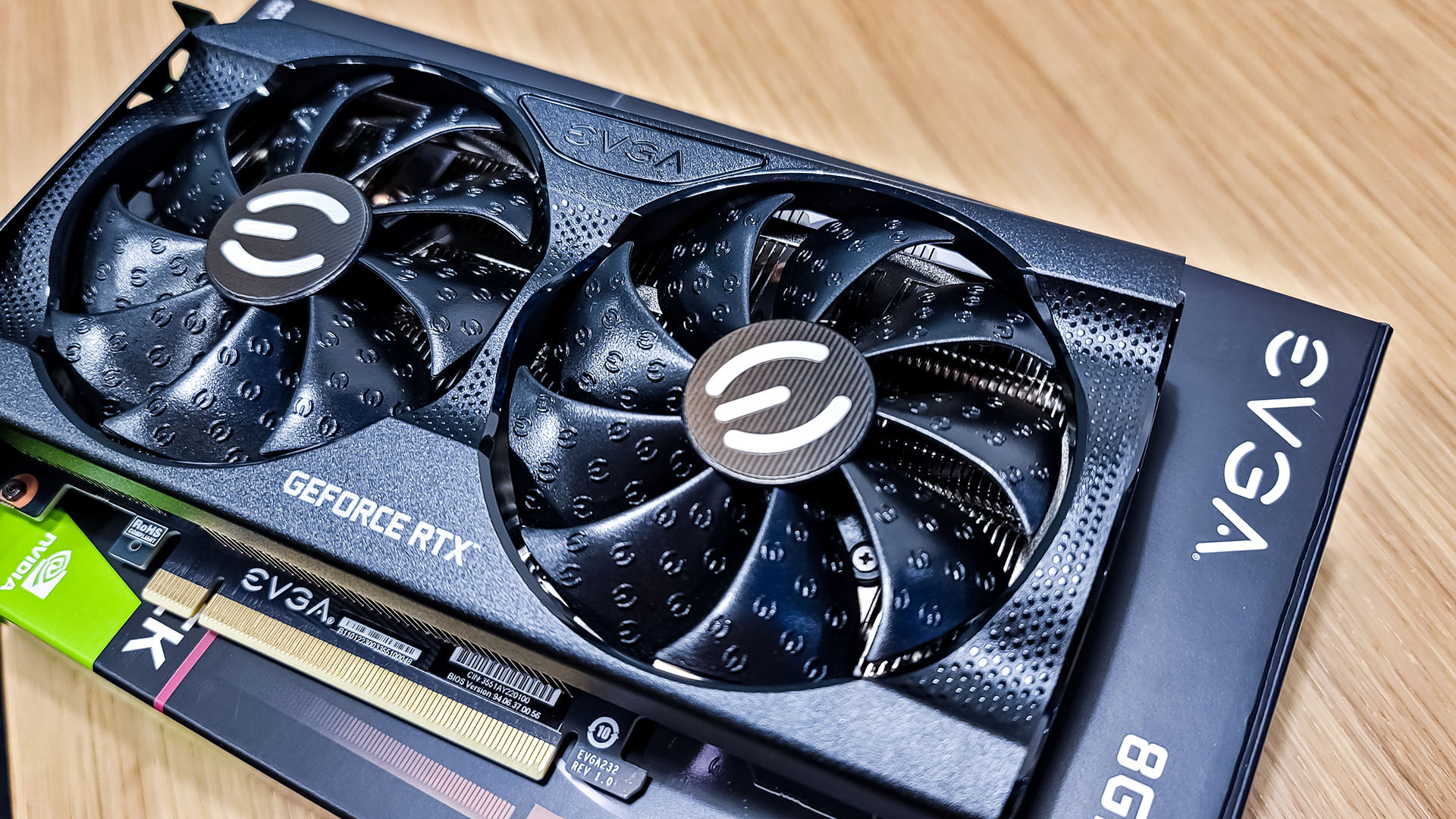
Features and chipset
The Nvidia GeForce RTX 3050, just like the rest of the RTX 3000 series, is built on Nvidia’s Ampere core. In previous launches in this lineup, the improvements Nvidia made to this core over the last-gen Turing core offered a huge gen-on-gen increase in performance – both for ray tracing and regular rasterization.
And the GeForce RTX 3050 is no different. Because of the smaller manufacturing process of Nvidia Ampere, Team Green was able to fit more Streaming Multiprocessors without increasing the size of the die, up to 20 from 14 on the GTX 1650. Nvidia was able to effectively double FP32 cores on each SM, giving the RTX 3050 2,560 CUDA cores, up from 892 on the GTX 1650. This means it’s way more powerful – at least on paper.
With this increase in SMs, there’s of course an increase in power required to drive the RTX 3050 – but not as much as we thought. TGP has only increased to 130W over the 75W TGP of the GTX 1650. That does mean that the AMD Radeon RX 6500 XT consumes way less power, but as we’ll see later, it results in a major loss in performance.
This is also the first xx50 card that's got Nvidia’s full RTX feature set. This means this GPU gets both RT cores and Tensor cores, so it’s capable of ray tracing and DLSS. Both the GTX 1650 and the GTX 1650 Super got excluded from these features in the last generation, so it’s nice to see them make their way to a 'budget' graphics card – especially DLSS.
Luckily, Nvidia also upped the VRAM on the RTX 3050 to 8GB of GDDR6 on a 128-bit bus with 224 GB/s of bandwidth. It’s not the fastest memory of this generation, but it should keep this graphics card fighting at 1080p for quite a while.
Because while it’s cool that an affordable graphics card has ray tracing, that’s not the main draw here. DLSS is going to be far more valuable for folks buying this graphics card, as it will boost performance significantly without impacting visual quality much. It’s not free performance per se – and you will notice a quality drop on Performance Mode, for instance – but it does stretch what the RTX 3050 will be capable of at 1080p.
You also get access to other Nvidia RTX tech, as well. Nvidia Reflex is going to be a big deal for this graphics card in particular, as the performance level it offers is already perfect for esports. Nvidia Reflex will enhance the esports experience further by cutting down on input lag. This feature is starting to appear in other games too – it was announced for God of War at CES 2022, for instance – and while it may be nice for a single-player title, it’s especially nice for multiplayer games like Fortnite or Counter-Strike.
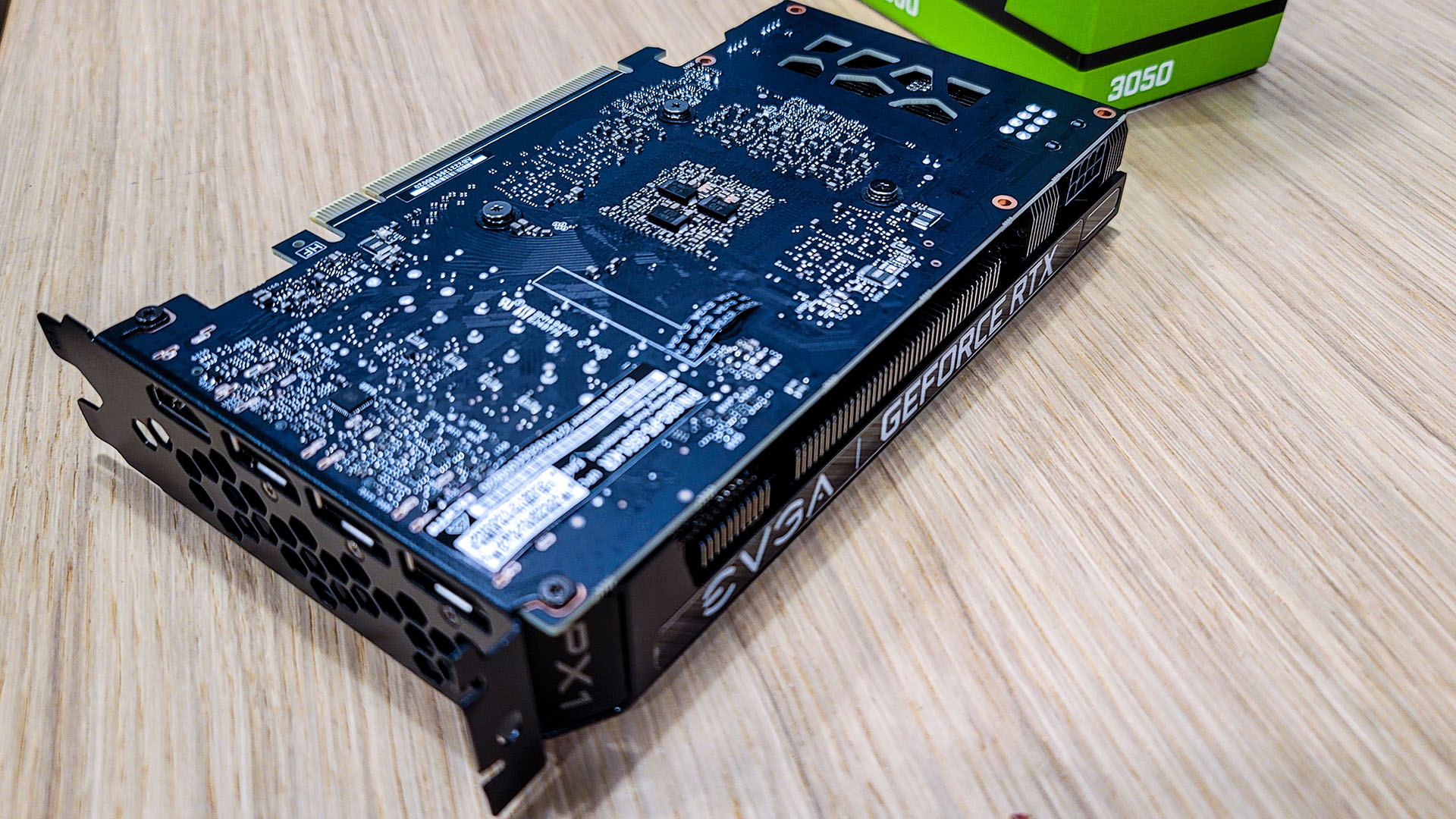
Design
We got the EVGA GeForce RTX 3050 XC Black for our review, and it’s pretty plain as far as graphics cards go. It has a simple gray and black colorway, with two fans and a nameplate on the side featuring the EVGA and GeForce RTX logos.
There’s nothing in the way of RGB lighting or much visual flair, which will make it a good fit for folks that want a low-profile build.
It’s also a very small graphics card, fitting in the same 7.94-inch design profile as the EVGA RTX 3060 XC Black. Combined with the small 130W TGP, this graphics card will have no problem fitting in a small form-factor build.
Because this graphics card is using the same cooler as its RTX 3060 counterpart, temperatures stay extremely low. Throughout all of our testing, temperatures didn’t rise above 60C. That was in an open-air test bench, so you may see slightly higher temperatures in your case, but either way, there’s going to be plenty of thermal headroom here. This means there should be enough room to overclock it a bit for extra performance – though we didn’t test that for this review.
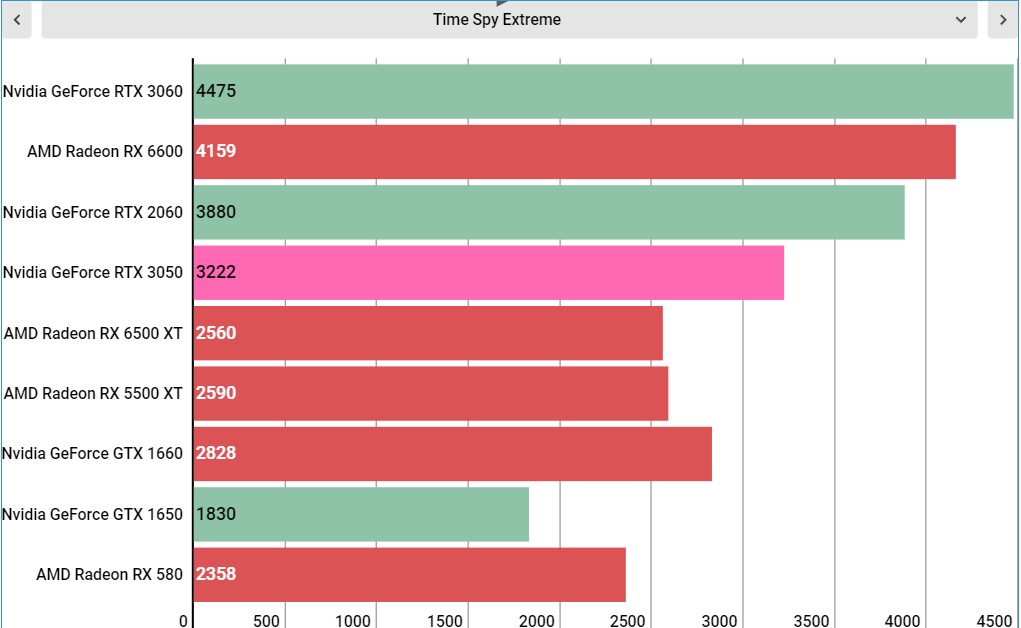
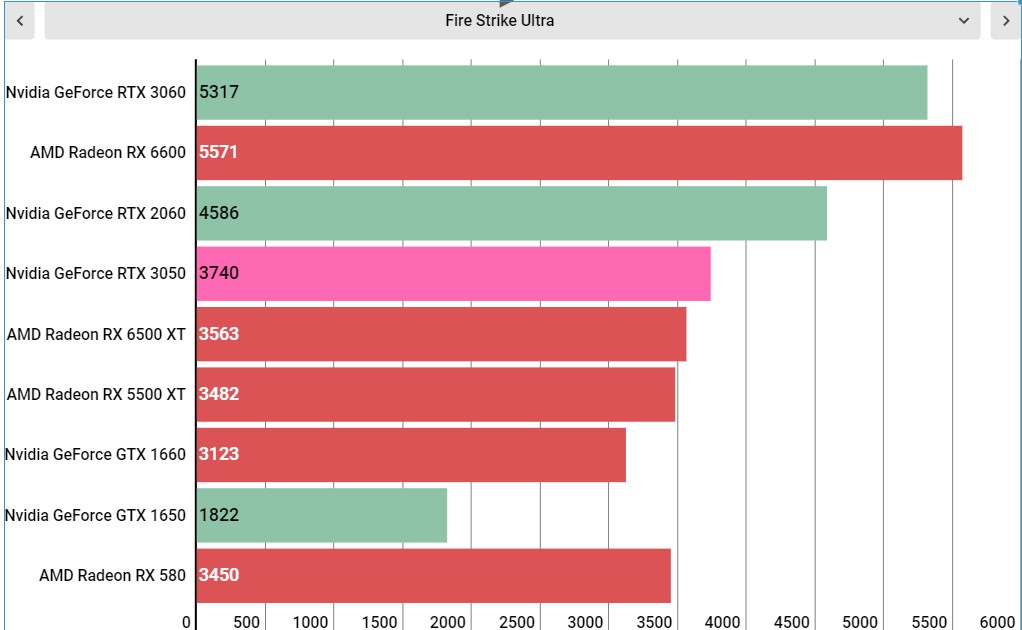
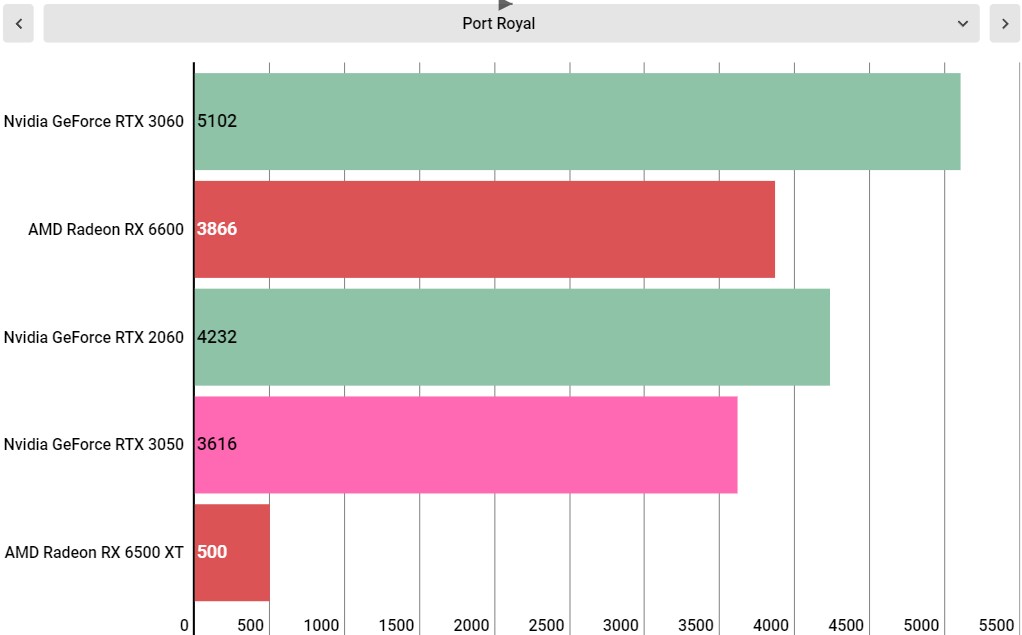
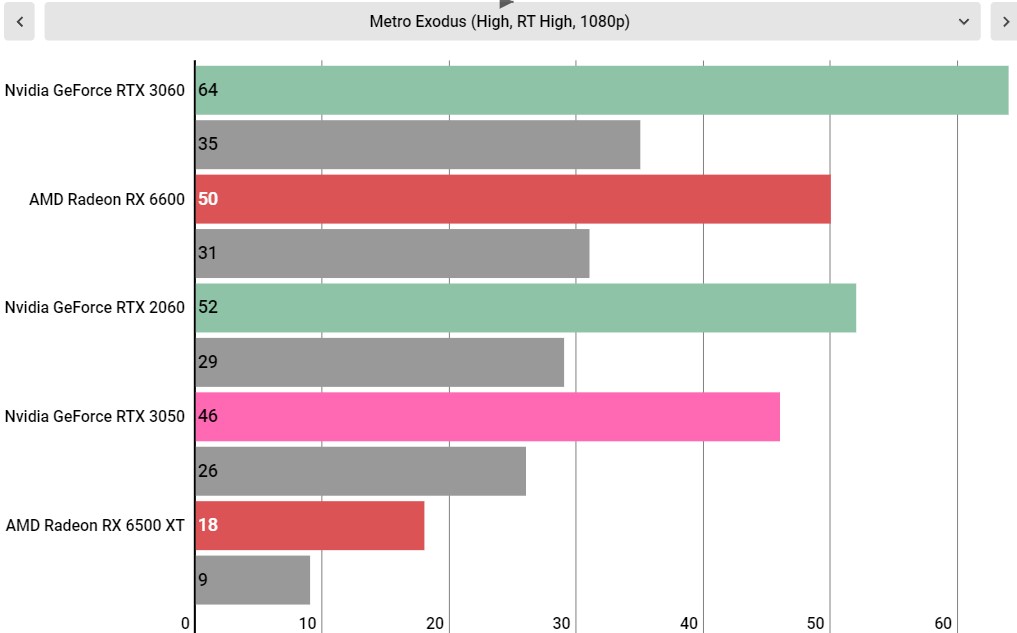
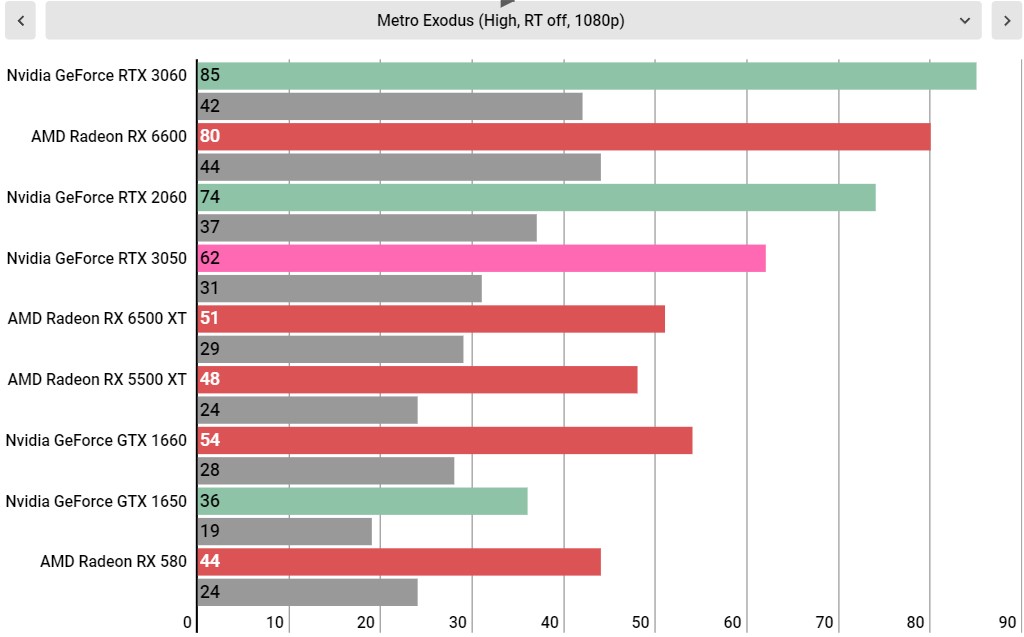
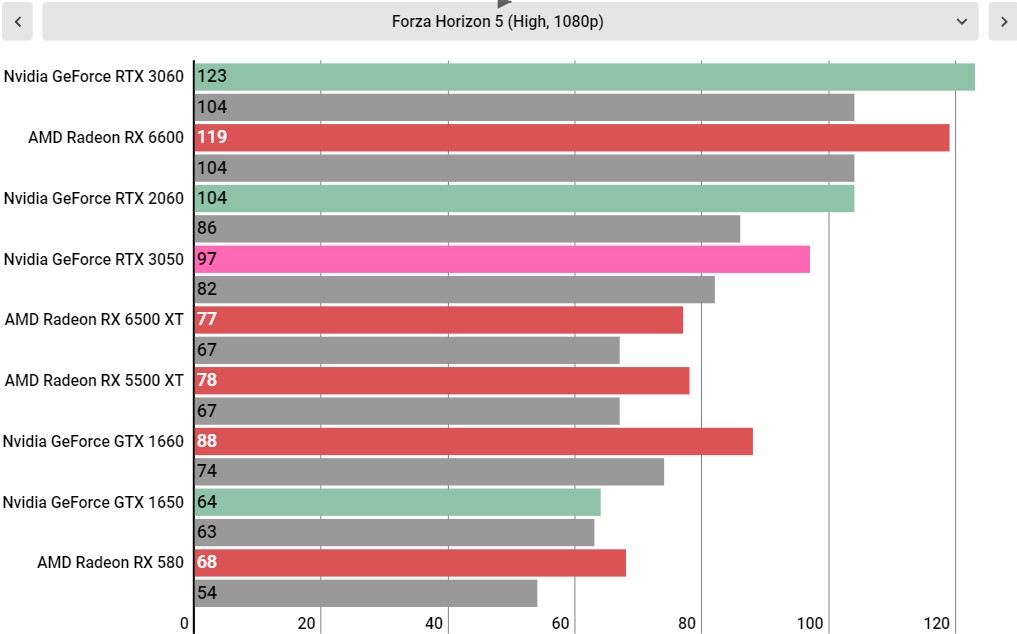
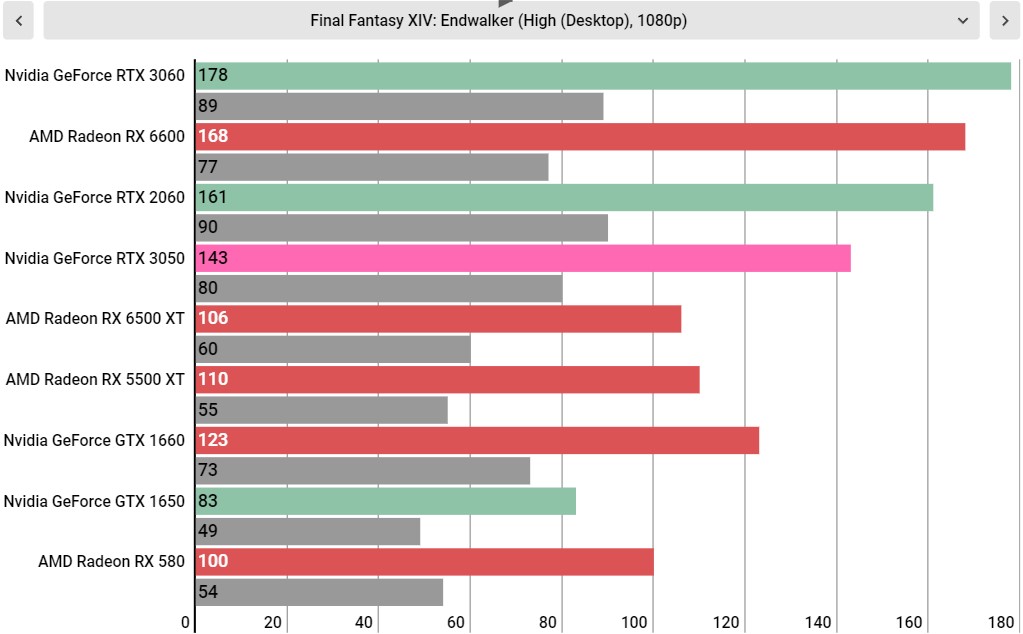
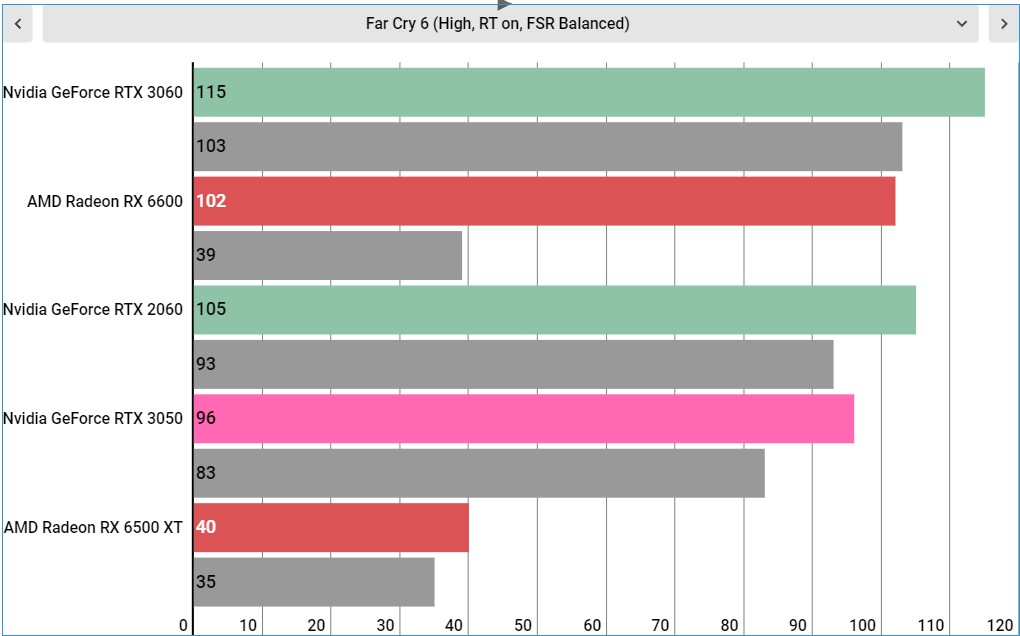
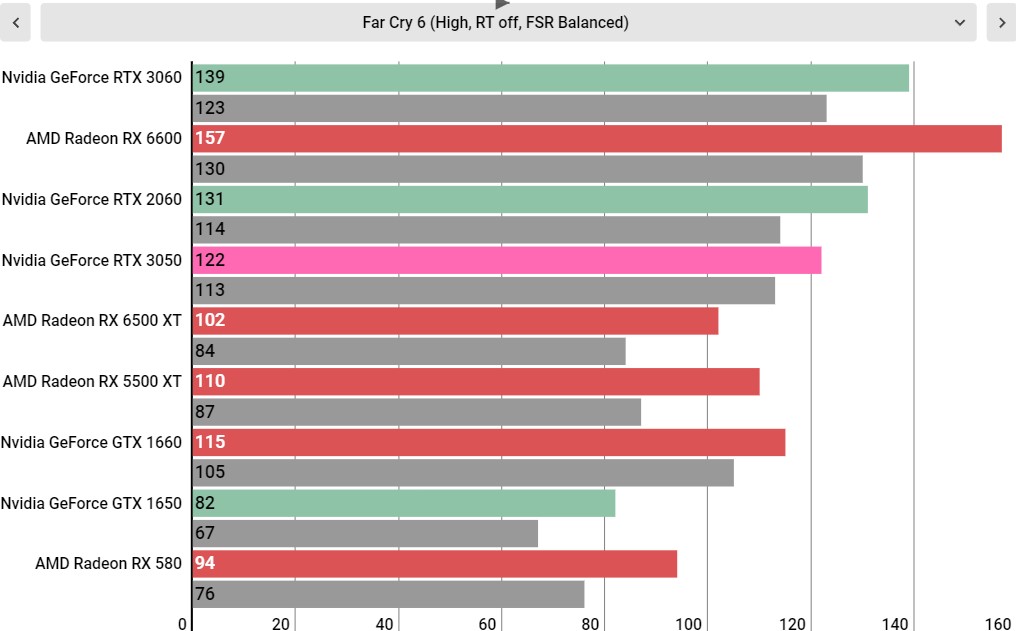
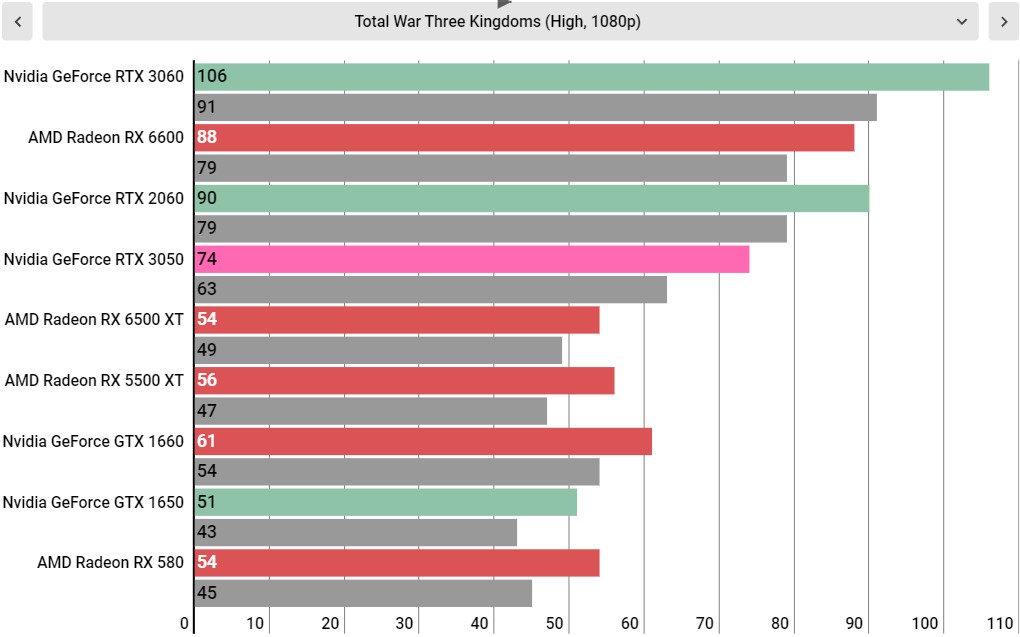
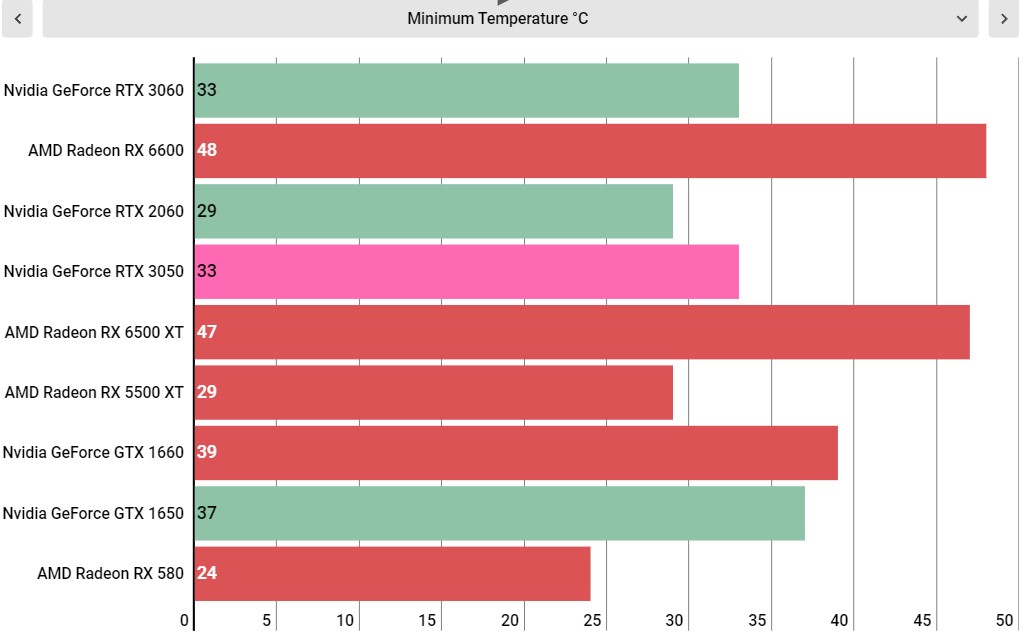
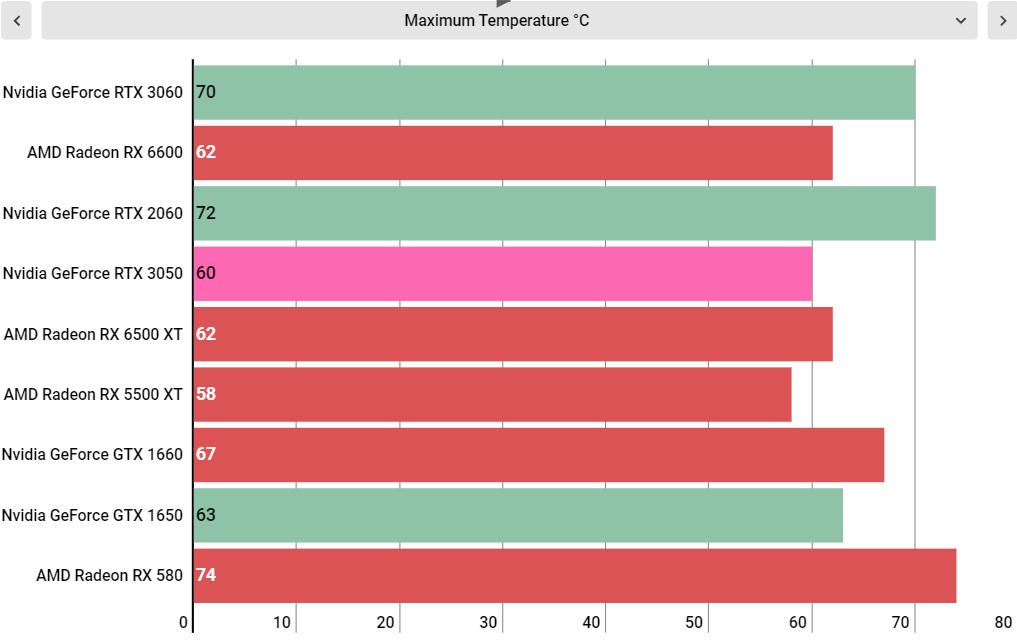
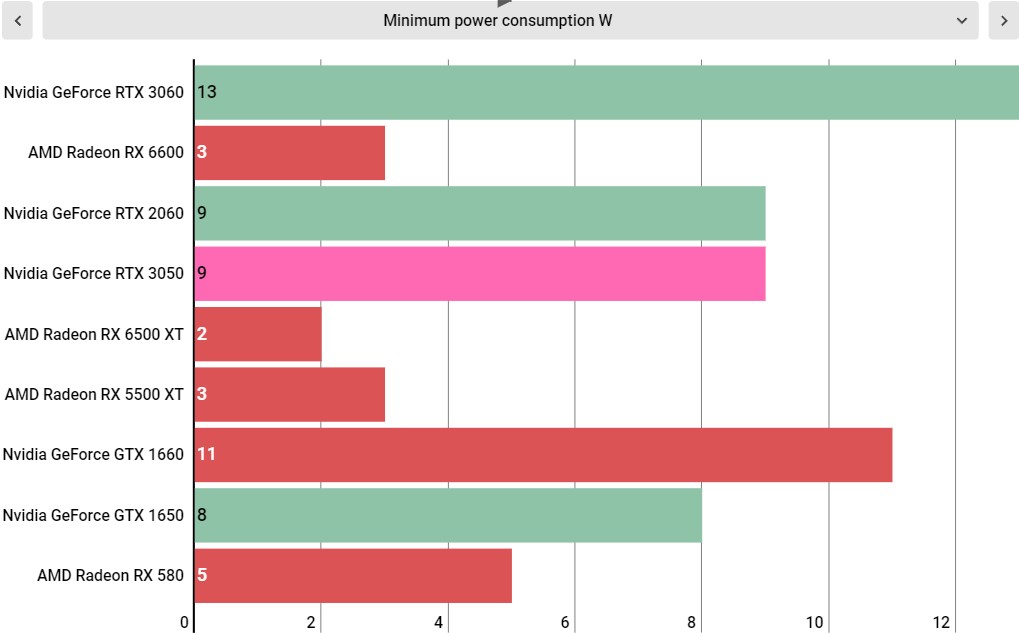
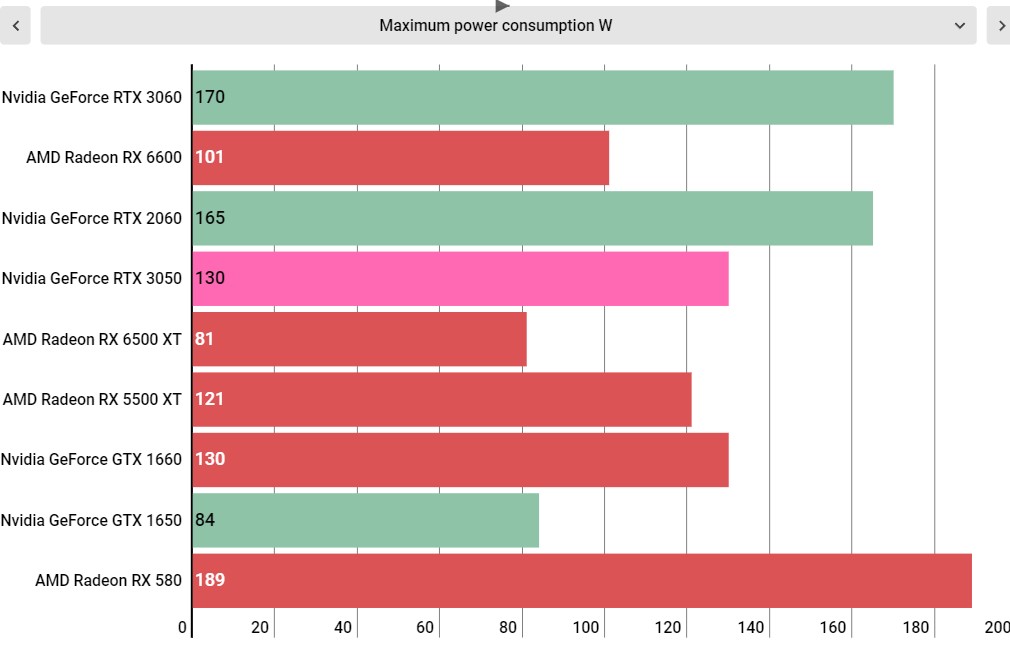
Performance
This is the system we used to test the Nvidia GeForce RTX 3050
CPU: Intel Core i9-12900K (16-core, up to 5.2GHz)
CPU Cooler: Corsair H150i Elite Capellix
RAM: 32GB Corsair Dominator Platinum @ 5,200MHz
Motherboard: MSI MPG Z690 Carbon Wifi
SSD: ADATA XPG SX8200 Pro @ 1TB
Power Supply: Corsair AX1000
Case: Praxis Wetbench
Nvidia is pitching the GeForce RTX 3050 as a budget 1080p graphics card, even though it costs as much as a mid-range card from 2018. Generally, the RTX 3050 is about 70% faster than the GeForce GTX 1650, which is a pretty massive improvement.
However, if you look a bit higher in the Turing pile, the comparison is less favorable. The RTX 3050 is only about 10-15% faster than the GTX 1660, which was about $40 cheaper than the RTX 3050 when it came out. And, if you look at the RTX 2060, which ended its lifespan at around the same price as the RTX 3050, Nvidia’s new card is between 10-20% slower.
Again, this is a symptom of the terrible state of the graphics card market right now, but it’s hard to look at the performance of this card, along with its price, and not reminisce about better days.
That being said, if you’re looking at the GeForce RTX 3050 in a vacuum, it’s actually kind of impressive for what it’s trying to do. Even in Metro Exodus with ray tracing on and DLSS disabled, it's able to get a solid 46 fps. Turn on DLSS and that’s 60 fps, easy.
It’s even more impressive in games with no ray tracing, though. We ran our testing suite with all the games on the high (or equivalent) preset, and the RTX 3050 stayed well above 60 fps in all of them. And, in a game like Final Fantasy XIV: Endwalker, it was able to get a solid 143 fps – enough for high-refresh gaming.
With the RTX 3050, you should be able to play pretty much any game in your library without having to compromise much on visual quality. Now that it includes DLSS, that performance is going to be stretched even further.
We just wish it was a bit cheaper. Because at the end of the day, it’s sitting between where the GTX 1660 Super and the RTX 2060 sat in price in the last generation, and it doesn’t meaningfully improve on that performance. So, while the RTX 3050 is a massive improvement over the GTX 1650, it still feels like stagnation, regardless of what the name on the box says.

Buy it if…
You can find it at a decent price
If you can find an Nvidia GeForce RTX 3050 close to $249 (about £185, AU$350), jump on it. The price isn’t ideal for the performance it offers, but the market is the way it is right now.
You’re good with 1080p
The Nvidia GeForce RTX 3050 is a pretty great little 1080p graphics card, able to play pretty much any game at high settings.
You need a new graphics card
With the way the graphics card market has been looking for the last year or so, this is the cheapest graphics card that’s worth getting. It’s not as cheap as we’d like, though.
Don’t buy it if…
You’re waiting for a true budget graphics card
If you bought the GTX 1050 back in the day and you’re looking to upgrade it with its current-generation equivalent keep waiting for a bit.
You want to do 1440p or 4K gaming
While the RTX 3050 is equipped with 8GB of GDDR6 VRAM, this is a 1080p card through and through. Higher resolutions are going to really put a strain on this GPU.
Jackie Thomas is the Hardware and Buying Guides Editor at IGN. Previously, she was TechRadar's US computing editor. She is fat, queer and extremely online. Computers are the devil, but she just happens to be a satanist. If you need to know anything about computing components, PC gaming or the best laptop on the market, don't be afraid to drop her a line on Twitter or through email.
